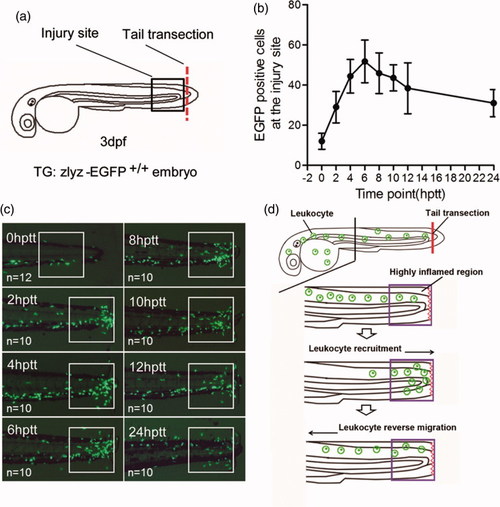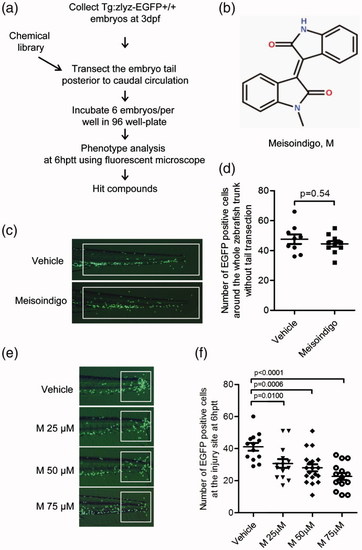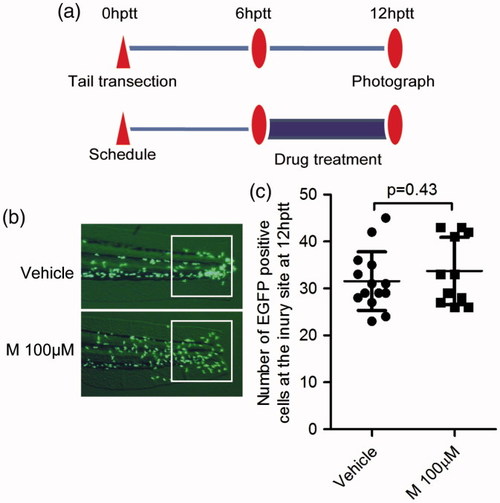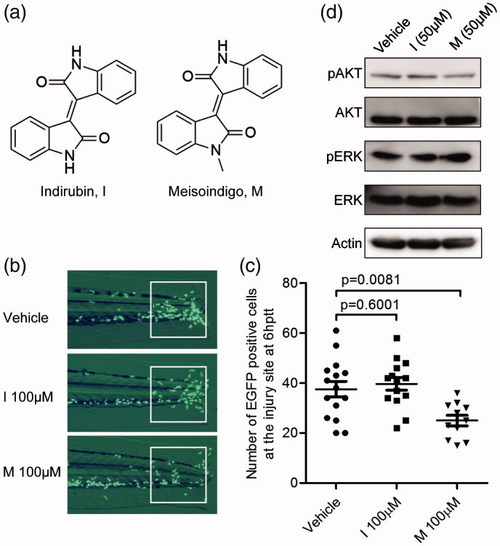- Title
-
Meisoindigo, but not its core chemical structure indirubin, inhibits zebrafish interstitial leukocyte chemotactic migration
- Authors
- Ye, B., Xiong, X., Deng, X., Gu, L., Wang, Q., Zeng, Z., Gao, X., Gao, Q., Wang, Y.
- Source
- Full text @ Pharm Biol
|
Leukocyte migration in response to acute injury is visualized in zebrafish embryo model (Tg:zlyz-EGFP). (a).Tg:zlyz-EGPF embryos (at 3dpf) were subjected with tail transection for generating zebrafish leukocyte migration model. The red line means the incision of tail transection, and the square region means the highly inflamed region. (b–c). Leukocytes that migrated to the highly inflamed regions [white boxes in (b)] in Tg:zlyz-EGFP embryos (3 dpf, |
|
Identification of meisoindigo that inhibits zebrafish leukocyte recruitment to the injury site. (a) Chemical screening strategy. (b) Chemical structure of meisoindigo. (c,d) Tg:zlyz-EGFP embryos (3 dpf) without tail transection were treated with vehicle( |
|
Meisoindigo has no effect on zebrafish leukocyte reverse migration from the injury site. (a) Treatment schedule. Tg:zlyz-EGFP embryos (3dpf) were subjected with tail transection and administrated with vehicle ( |
|
Indirubin, the core chemical structure of meisoindigo, did not inhibit leukocyte chemotactic migration, and meisoindigo does not regulate pAKT/AKT or pERK/ERK level. (a) Chemical structure of indirubin (I) and meisoindigo (M). Meisoindigo is a synthetic derivative of indirubin with a methyl substitution at N element. (b,c) Tg:zlyz-EGFP embryos (3dpf) with tail transection were treated with vehicle ( |




